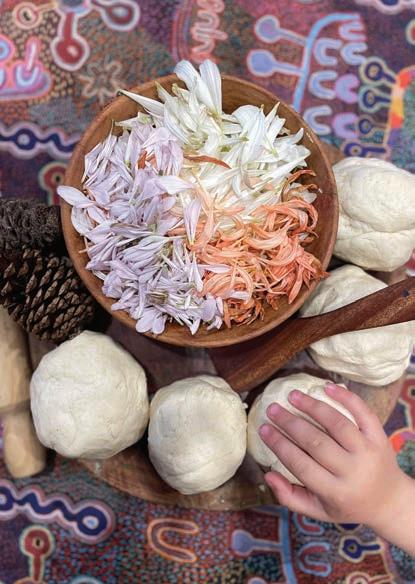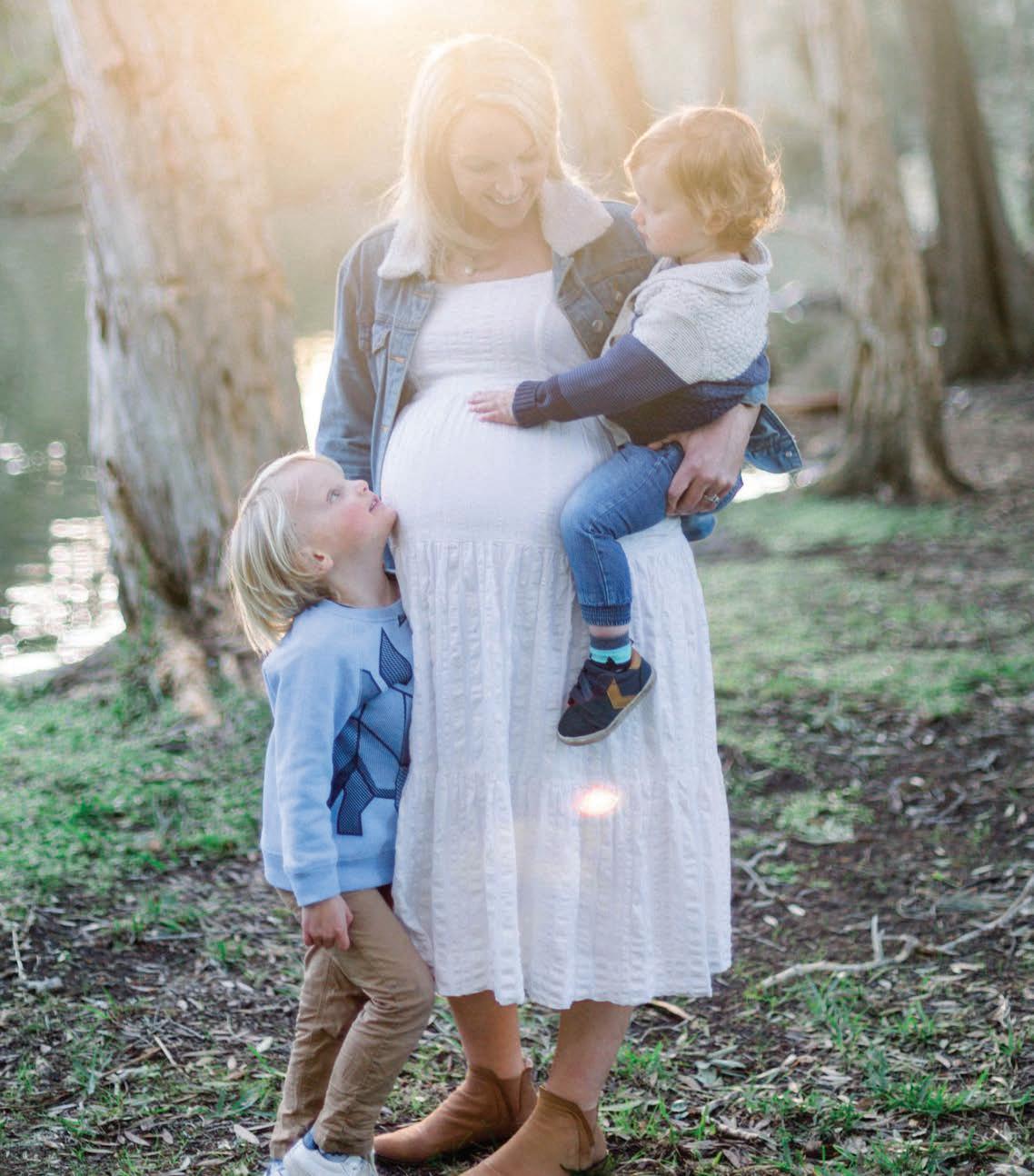






As we approach Easter, Anzac Day, and Mother’s Day, it’s important to reflect and appreciate those in our lives, both present and past. And while we may miss loved ones who are no longer with us, it’s the memories they leave behind that will forever live in our hearts.
This year, we’ll be celebrating without our beloved Nan, who passed away last month at the vibrant age of 96. While we’ll miss her humour and affectionate hugs, it’s our memories with her that we’ll cherish forever.
As Maya Angelou once said, “people will forget what you said and did, but they’ll never forget how you made them feel.”
Let’s make memories with our loved ones that will warm our hearts for years to come. Whether it’s playing games, sharing meals, or simply spending time together, let’s create experiences that bring us joy and let their legacies live on in our hearts.
Sending light, love and gratitude to you, Coasties xxx
Art Director/Editor
Tanzie Carpenter tanzie@onthecoastpublications.com.au
Production
Luke Carpenter luke@onthecoastpublications.com.au
Publisher
Tanzie Carpenter / 0414 611 851
Luke Carpenter / 0405 449 339 trading as On the Coast Publications
ABN 52 212 212 482 PO Box 3251, Bateau Bay NSW 2261
For advertising enquiries advertising@onthecoastpublications.com.au
For article contribution enquiries tanzie@onthecoastpublications.com.au
Cover image
The Natural Photography Co thenaturalphotographyco.com.au @thenatural_photographyco Imagery ingimage.com and freepik.com
Contributors
Sam and Jordi Woods, Dr Sam Pethen, Laura Hurstfield, Sarah Tolmie, Jodi Donovan, Clare Marcangelo Georgia Spencer, Alita Blanchard, Louise Hurley, Dr Nicholas Altuneg, Cathy Spooner, Harriet Blannin–Ferguson and Jessica Sanford.
onthecoastpublications.com.au
4 Coffee with a Coastie –Kate Perkins

Warranty & Indemnity
Advertisers and/or advertising agencies upon and by lodging material with the Publisher for publication or authorising or approving of the publication of any material INDEMNIFY the Publisher, its servants and agents against all liability claims or proceedings whatsoever arising from the publication and without limiting the generality of the fore–going to indemnify each of them in relation to defamation, slander of title, breach of copyright, infringement of trademarks or names of publication titles, unfair competition or trade practices, royalties or violation of rights or privacy AND WARRANT that the material compiles with all relevant laws and regulations and that its publication will not give rise to any rights against or liabilities in the Publisher, its servants or agents and in particular that nothing therein is capable of being misleading or deceptive or otherwise in breach of Part V of the Trade Practices Act 1974. The views expressed in On the Coast –Families are not necessarily those of the editor or publishing staff. While every effort has been made to insure accuracy of the information in this publication, no responsibility will be accepted by On the Coast – Families. No part of this publication may be reproduced without permission of the publisher.
7 Stylish mum’s at every stage
11 Let’s talk about Endometriosis
12 Is it Time Up for Time Out?
14 Enabling mistakes: A life & love lesson for an overachieving mum
15 Tips for a healthier winter home
16 Meltdowns, anxiety and focus issues – how can nutrition help?
18 Co–Parenting: A journey of positivity, teamwork and legal guidance
20 A few insights on raising boys
22 Busting the myths around strength training for women
24 Could c oloured lenses improve reading ability?
26 It’s not you... we are failing our mothers
Welcome to Coffee with a Coastie. We were excited to chat with Kate Perkins. Kate has worn many hats throughout her life, from elite athlete, to mustering cattle on horseback and is now a passionate practitioner in cancer rehabilitation. So, it was an absolute pleasure to sit down and chat with Kate about her inspirational journey and her passion to help and inspire others.
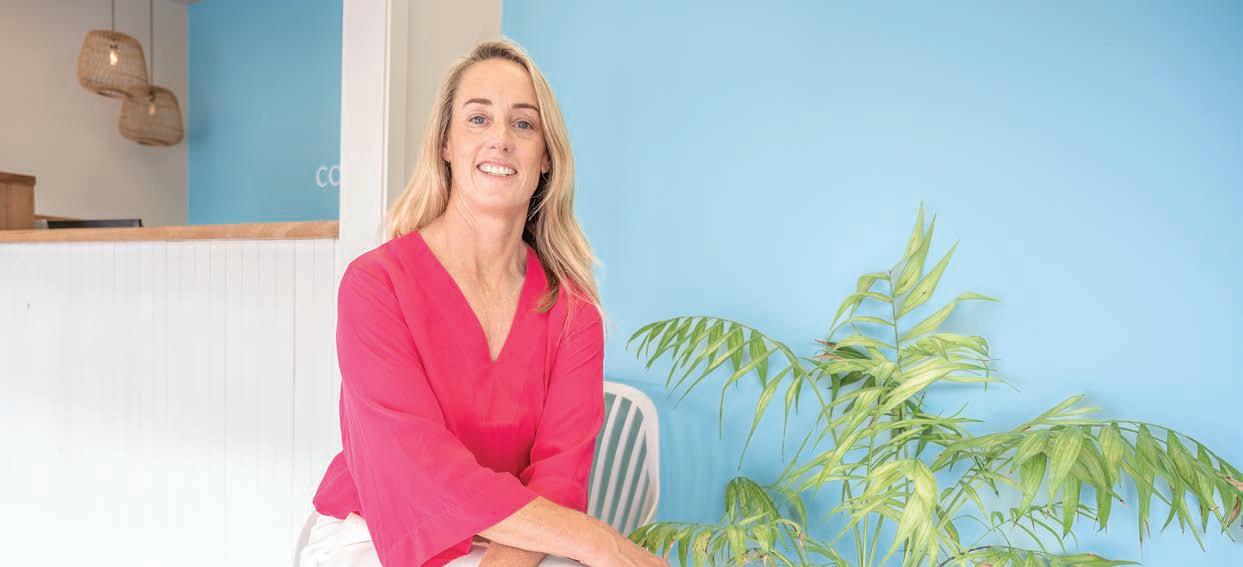
You were born in Darwin and used to live in Queensland. What brought you to the Central Coast?
I journeyed all around the world and did a lot of things before moving to the Central Coast. With a majority of my growing up being in Yeppoon in Central Queensland. Then after school I spent 12 months in Japan as a Rotary exchange student and became fluent in Japanese, before I returned to Australia and applied for a Bachelor of Arts in Japanese. Once I finished the degree there was a lot of traveling overseas to Canada, Europe and everywhere. Until I came back and went on a surf trip to Hawaii in 1998 with a friend that was a remedial massage therapist and I thought I could do that. So when I came back from that trip I went and studied remedial massage therapy and did that for a huge chunk of my life. Though after years as a remedial massage therapist my hands wouldn’t work anymore, so I’ve gone, okay what am I going to do now? I then ended up
in Sydney and went back and studied occupational therapy. It was at the end of studying that in 2013 that I met Ben, my partner, who lived on the Central Coast and I’ve been here ever since.
You have told me that it was through a desire to create something meaningful in your life and to inspire your own son Nat, that your business Cancer Rehabilitation & Lymphatic Solutions was created to help others. Who is it that has inspired you in your life? Mum! She’s a quietly driven person. She always said to me, I’m not as brave as you to get out there and do the things that you’ve done. But she was a nurse, and I was born in Darwin and my brother was born in Katherine in the Northern Territory and we were living in Maningrida in Arnhem Land, as Dad was in the police force in the Northern Territory. So, we were completely isolated and away from family. Back then mum was in her early twenties with two young children and the only way you could get in and out was by sea or by barge that came every three months. So, you know she’s a massive inspiration. She’s a quietly determined, very strong lady. That’s pretty inspiring and she always encouraged me to do what I needed to do, but was also always a little bit cautious. Saying things like, you’re a bit brave in doing that, or do you think that’s the right thing? My Dad was also always there to encourage me and support me with whatever I wanted to do.
Out of all that you’ve done, what do you feel has been your greatest achievement?
First of all, I think my greatest
achievement was starting a family. As I was a late starter in that department, because of all the traveling and things. Also, I felt that I wanted to achieve something great before I had a family. So my kids could have something to look up to. But it wasn’t until our son Nat was 18 months old that I started my business from scratch in 2017. So, starting our family and building my practice happened all at the same time, which was pretty cool. It’s been a lot of hard work, but I think my practice has been my greatest achievement other than my family.
You have developed good habits around exercise, though what do you recommend to someone that associates exercise with being a challenging task, that drains energy and wears them down, rather than increasing endurance and building them up?
Start low and progress slow. I work with women who’ve been diagnosed with breast cancer, and I work with them all the way through their treatment. I’ve worked with women who haven’t had exercise in their life, and I’ve started working with them through their chemotherapy, and by the time they’ve finished their chemo and had their surgery, they come out the other side stronger than when they started and maintained it.
I start with breathing, which has a number of different benefits. One of those benefits is increasing the oxygen to the brain. So automatically you feel more energized. Then from there, if you’re a bit more energized you might feel like doing some stretches, which should be gentle, but still sending more oxygen
to the muscles. From that point you might feel a bit stronger and you’ve got more energy, so you might feel like doing some weights or going for a walk. Starting gently maybe a couple of times a week. As you start feeling really good, then you’re eating habits might change. When you start eating well, your body starts to feel amazing. So, it’s guiding them into feeling good. Then when you’ve got more energy and you feel good, how could you not want to feel like that?
You use MLS Laser Therapy as part of your treatment. What is it that made you realise the MLS Laser Therapy was perfect for your patients?
As a cancer rehab and lymphoedema therapist, I was using a handheld laser, what they call a low level laser, to help soften radiation scar tissue, surgical scar tissue and soften harder lymphedema tissue. This handheld laser had a diode of half a centimetre, and you’d have to have it on a point for one minute and then move it two centimetres and have it on for another minute and do that until you’ve covered an area which could take a really long time. Then I was at the Australasian Lymphology Association Symposium on the Gold Coast where I met Dr. Catherine Norton who had a stand there and I asked her about the lasers. She had the non–robotic M5 MLS laser. It has what’s called a Charlie head hands free laser diode, which has three laser diodes. So, you could treat someone hands free without putting your hands on them and treat a large area. It also had a handheld component, so immediately without Catherine explaining everything I’m looking at the hands free component and the handheld component, thinking I could treat two places at once on the body. The treatment itself is called photo biomodulation therapy using an MLS laser and the results are immediate. Increasing the number of people that I’m able to see and getting amazing
outcomes for my patients. We’re also using the laser during radiation to prevent or reduce the likelihood of radiation dermatitis or reducing that radiation burn superficially. But what it’s also doing is starting to heal the tissue underneath that’s been damaged from radiation. I’ve used the laser during their radiation treatment and the area that’s been treated has remained soft and their breast tissue has remained soft.
Lastly, the first time we met in 2021, you had just danced in the Stars of the Central Coast for the first time. You are now returning in 2023 to the Stars of the Central Coast as an All Star. How did this come about?
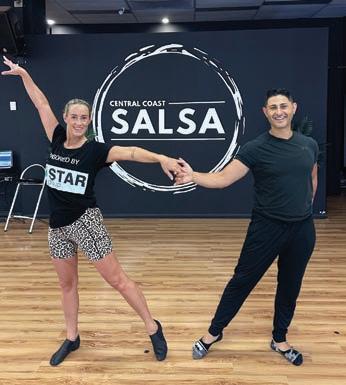
The first time I danced in the Stars of the Central Coast I’d previously done some collaboration work with the Cancer Council. So when I saw it pop up on Facebook or the news somewhere I was thinking, I’d love to do that and I said to Jaynie from the Cancer Council, how do I get on it? It was a few months after that, when I’m pretty sure someone went out with an injury that they’ve gone, who can we get, let’s get Kate. So, I was a wild card in 2021. Which was awesome because it was what I wanted to do; I love dancing. I’ve never done formal dancing before. But as a kid my girlfriend used to choreograph. She was excellent and I used to copy what she did, and I loved it. One of my dreams was to perform a
number out of Chicago the musical on stage to a packed house. So when Lauren, my dance partner said, we’re doing a Broadway number, we’re going to do a number out of Chicago. I’ve gone, are you kidding me? I had such an awesome experience and wanted to do it again. So when the All Stars came around, because this is their 10 year anniversary, I was like, pick me, pick me and this year I’m dancing salsa with Krin from Central Coast Salsa.
We offer our gratitude for all that Kate does and for sharing her story with us. If you want to find out more about Kate, go to her website www.lymphaticsolutions.com.au
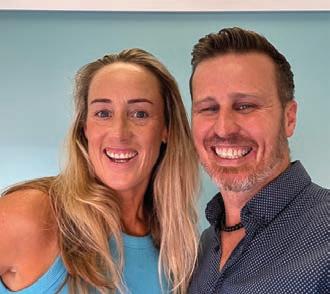
So be sure to scan the QR code or go to coffeewithacoastie.com.au to hear the full conversation where we talk about:
• Growing up in Queensland riding horseback along the beach
• Kate’s journey around the world before settling on the Central Coast
• Getting into Vet Science to prove your grandmother wrong
• Mustering cattle on horseback
As part of being in the Stars of the Central Coast, there’s fundraising and raising awareness about the Cancer Council, with all the funds that are raised staying on the Central Coast, and over the 10 years it’s been running $1.1 million has been raised by the Stars, which is pretty phenomenal. Super focused
• Kate talking in depth about the benefits of MLS Laser Therapy

I start with breathing, which has a number of different benefits. One of those benefits is increasing the oxygen to the brain. So automatically you feel more energized.
YAAS! Young Authentic and Social is an award–winning arts and culture program for 12–24 year old marginalised youth on the Central Coast, hosting social groups, creative workshops and celebrations.
YAAS! has your April school holidays covered with three awesome FREE events across the Coast, from Wyong to Umina Beach.
Dance workshop: Come strut your stuff with The Pioneers at our Street Dance Workshop
Podcasting workshop: Learn the basics of podcasting with Studio Ark
Teen Dance Party: Celebrate your uniqueness at our Supreme Beings: Teen Dance Party
Kicking off our school holiday programming on April 13 at GNL Wyong

is our Street Dance Workshop with legendary dance collective The Pioneers visiting the Central Coast for one day only for a Street Dance workshop for all 12–24 year olds. No experience required so try something new, get your body moving and step into your confidence! This workshop is suitable for all experience levels and abilities and Aboriginal, LGBTQIA+ and all abilities especially encouraged to get into this one.
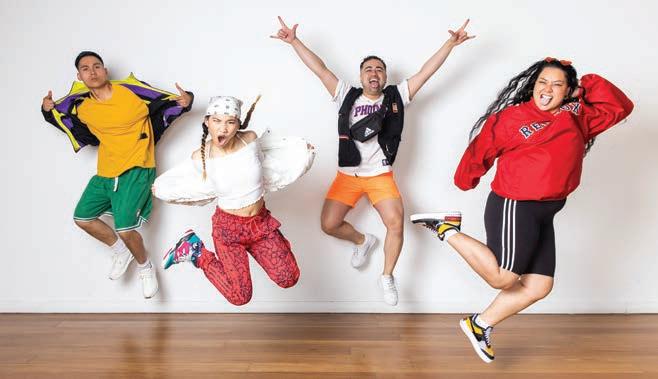
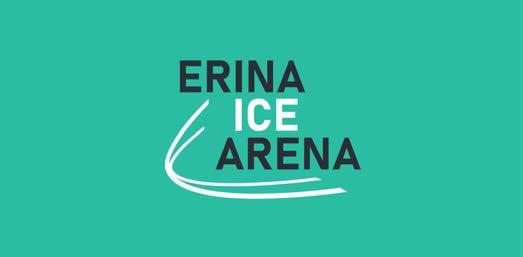
Youth Podcast Workshop will run for 2 days, 18–19 April in Gosford at Naughty Noodle HQ right in front of the station. Come and learn the basics of podcasting in this workshop for 12–24–year–old LGBTQIA+ youth and allies! We will create our own series with LGBTQIA+ Youth in conversations with Queer Elders. Whether you’re interested in the producing, performing, editing or promotional side of content creation, this workshop has something for everyone.
Ending the school holidays and
launching Youth Week with a BANG we want to see everyone come along to our 3rd dance party. “Supreme Beings” Teen Dance Party will be on 21 April at PCYC Umina Beach and we are calling all 12–17 year old LGBTQIA+ youth and your mates/allies. Get ready to step into your divine power and shine as your authentic self. With performances from local artists and a DJ, dance the night away on Cloud 9! Get over to the make–over at our makeup booth, indulge on free food and meet new friends to add to your royal court.
Dress code: What would you look like as a Supreme Being? Think deities, celestials, gods, goddesses and immortal creatures. Wear whatever makes you feel your most powerful and FABULOUS.
All events are FREE! For more info and to register your spot at one or all activities, visit naughtynoodle.com.au/yaas
When you’re pregnant it can be so easy to opt for active wear day in, day out because it is stretchy, comfy and as a society, it is quite accepted to spend the day in it. However, it doesn’t always leave one feeling stylish and for some it can be quite confronting having such tight fitting garments on an ever growing silhouette.
In light of Mother’s Day, we want to share a few tips, tricks, garments to try/buy and styling hacks to implement when you are pregnant that will take your wardrobe through all stages of pregnancy and post partum and leave you feeling modern, stylish and not “mummsy”.
Don’t think because you are becoming a mum, whether it’s for the first time or not, that you need to sacrifice your style and dress safe. On the flip side don’t sacrifice your style just because you can’t wear your regular clothes.
TIP / Always try to add in some element to your look that depicts your style. For example if you have a fun, quirky style, add in a statement necklace or some bright coloured sneakers. If your style is more modern and luxe, try a crystal headband teamed with a tee, pull on jeans and a loafer shoe.
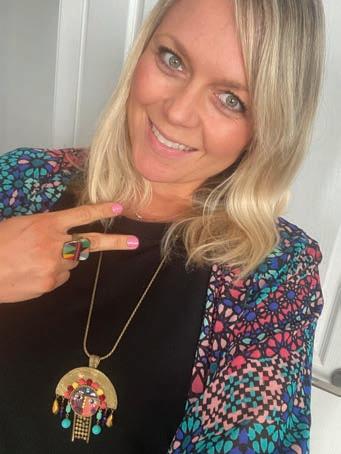
Overalls are amazing as they have room and can be dressed up with a blazer on cool days and dressed down with a tank/tee on warmer days.
A Slip Dress is ideal as they are not waisted and can be layered. For example; wear with a tee underneath to create a pinafore look or layer a
longline cardi or unstructured blazer over the top for when a little added warmth is needed.
Knit Stretch Pants are great as they can be worn above or below the belly and layered with a relaxed tee and oversized denim jacket for a real relaxed casual look that isn’t gym tights and a jumper.
A comfy sneaker, coloured cross body bag and bold necklace teamed back with the same jeans and blouse is a great alternative for a coffee date and groceries.
Kimono or long line shirt dresses are fantastic as they can create the illusion of length in the torso and be layered over something more fitted without leaving you feeling too exposed.
TIP / If you are going to purchase clothes, invest in pieces that will grow with you such as a ribbed elasticated slip dress or look at vintage stores, on “Market Place” or hit up some friends who no longer need their maternity clothes.
If you find a garment that fits, is comfy and you love, get creative and dress it up/down for various occasions. Accessories will become your new best friend!!
A statement earring, glitzy clutch and ankle boot are perfect additions to your jeans and blouse for dinner at the pub
As each stage of pregnancy is so different and varies in size, try splitting your wardrobe into three stages of sizes. Once one stage no longer fits you, fold it away and focus on the next stage, this will minimise any frustrations and ensure you can get out the door quicker as you won’t have to try three pairs of pants on looking for one that fits.
For some, maternity dressing can be confronting as your body can change so vastly. If you struggle mentally, focus your styling on the areas you like i.e wrists – focus on bangles, décolletage – focus on necklaces, calves – opt for higher boots. Above all, be kind to yourself and acknowledge you are growing life inside you and focus your mindset on the positives in your life and things you like about your physical appearance – it will change your mind set instantaneously.
Happy Mother’s Day to all the Mummas, expecting Mummas, Mummas who are no longer with us and the amazing Mother Figures.
Vibrantly yours, Sam & Jordi Woods xx
Understanding styling and fashion is one thing. Having a super natural flair for making everyday people look incredible is another. Once you’ve met Sam & Jordi Woods, it’s hard not to catch their infectious passion for dressing to match your own lifestyle, personality and charisma. Through their consultancy ‘Vibrant Concepts’, Sam & Jordi have transformed the lives of thousands. Let Sam & Jordi show you how to look and feel fabulous everyday at their Style Studio in Erina – learn the art of illusion dressing, colour matching, styling, translating fashion trends and savvy shopping with their unique VC Signature Styling Systems and services that are truly personal and really work! To contact Vibrant Concepts phone 0425 221 676
be kind to yourself and acknowledge you are growing life inside you and focus your mindset on the positives in your life and things you like about your physical appearance – it will change your mind set instantaneouslyTanzie, owner of On the Coast Publications –6 months pregnant with bubs #3
Joy! Just hearing the word sparks an emotion of happy memories. So, we thought it was time to celebrate the Joy of Childhood with the return of our beloved event, the Central Coast Kids Day Out, this year to be held on the 7th of May at Narara Valley High school – including all rides for free!


Since 1999 when the committee first formed with the purpose to connect families of the Central Coast to the services and agencies available to build resilience and find the support they needed, which without the technology we have today was a creative way of connecting with as many families as possible, we have continued to grow our event into an informative and interactive experience of excitement and Joy!
This year we bring you an amazing lineup of local acts showcasing the amazing talents of our children and youth on stage along with our major acts ‘Bluey and Bingo’ and the ever popular ‘Paw Patrol’ !
We are very proud to be launching ‘Woosical the Musical’ with all the beloved characters of the Worry Woo’s joining us on stage, who help kids understand their emotions.
Focusing on our youngest ones ‘Baby Sensory’ will be hosting a sensory room experience in the theatre for you to relax with your baby and toddler and join in the free classes. Moving to the hall where you can sing and dance with our Nursery Rhyme sing along with the ‘Tiptoe Giants’ bringing their colour and fun to the stage.. Our journey then takes you to the basketball courts where everyone can experience just what it’s like to be a grown up (from being a baker, a farmer or a builder), and going to work with ‘Lil Industries’.
All of these experiences will have you out of the weather and undercover for a break, until you head back to have another ride. Did we mention they are
free? Fill up on some tasty food from one of the stalls and then back to watch the shows on the main stages – so much fun!
Don’t forget to visit the many stall holders showcasing our local businesses and crafters who will have some beautiful items just in time for Mother’s Day gifts. Also learn about your local early childhood services and support networks.
All our stall holders have engaging activities for your children to enjoy while giving you the time to chat and learn how they can support your family.
We maintain our low ticket prices and the funds raised go to produce the next year’s event. We are a committee of volunteers dedicated to nurturing our Central Coast families and we can’t wait to meet you at this year’s event!

Memorials provide a place for people to gather and remember those who served from their local community, region, state, or country.
There are few things in life more stressful and heart breaking than the death of a loved one. While end–of–life services are a time for loved ones to come together and celebrate a life, these events are also a whirlwind for the grieving. Life for surviving relatives continues after a death, and everyday activities may feel impossible while grieving.
But there’s an important step in the grieving process family members and friends should take after a funeral or memorial service ends: Memorialisation.
Memorialisation is the act of preserving memories, events or people, and allows individuals to remember and honour their loved one. It comes in many forms ranging from ceremonies to gatherings to physical pieces of remembrance like a memorial site.
“Memorialisation is a wonderful way to cherish the fond memories of those departed, while also allowing the living to grieve. In fact, social sciences believe that memorialisation is a crucial part of the grieving process.”
No two individuals grieve the same, and it’s impossible to attach a timeline to the grief process. While grieving can cause periods of sadness, anger, stress or

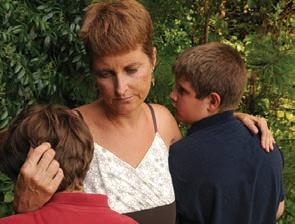
anxiety, memorialisation helps to honour a loved one’s life and center your emotions, resulting in a healthy grieving experience.
It provides a central place to visit Many families choose to memorialise a lost loved with an actual memorial. Memorials are created for both buried and cremated loved ones and create a central place for families and friends to gather or visit alone.
For instance, if your loved one was buried or inurned in a cemetery, use the cemetery memorial as a location to congregate.
It helps focus on the positive
The death of a loved one frequently leads to feelings of negativity or a loss of interest in everyday activities. However, memorialisation can help you focus on the happiness you and your deceased loved one once shared.
When creating an actual, tangible memorial, such as a memorial site, consider the uniqueness of your loved one’s life. For instance, perhaps there’s a meaningful quote or positive statement that you could use as an inscription on the memorial.
It brings loved ones together
While a death in the family may bring loved ones close together for a few days to plan and attend a funeral service, it’s necessary to return home or to work once the events end. While some
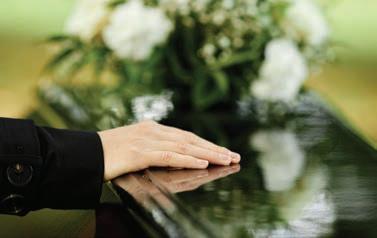
memorialisation practices focus on visiting a memorial, it also presents the opportunity for families to come back together to grieve, heal and celebrate their loved one as a group long after a funeral.
How do you want to memorialise a loved one?
A headstone is deeply personal and important to honouring and celebrating those who have passed away.
Why are memorials like this important? A memorial serves as an everlasting tribute to a life well lived and life worth remembering. It is a representation of that person and how they lived; it is a final gift. Memorials can be custom made and personalised to honour and depict that person the way he /she and family would have liked to be portrayed. It gives all mourners (not just family) access to pay their respects and connect with the one who has died. Additionally, a permanent memorial provides an established location for non–family members to mourn.
Memorialisation is important because it helps survivors come to terms with the reality of losing a loved one and to begin the work of grieving. Memorialisation allows a place and time for family and friends to be supportive during such a trying time.
Complimentary
Wednesday 7th June – Commencing at 1.00pm
• Overview on vicarious trauma, burnout and compassion fatigue
• Recognise the early warning signs and risk factors
• Learn practical strategies to build your emotional resilience and coping skills
Wednesday 16th August – Commencing at 5.00pm
• Learn practical tools and strategies to support children in developing the emotional literacy and self-regulation skills necessary to understand and manage their big emotions.
SEMINARS HELD AT: Hillside Chapel, Palmdale Lawn Cemetery & Memorial Park, 57 Palmdale Rd, Palmdale
To book your seat, please call 1300 130 955
Iam writing this article during March, which is Endometriosis awareness month. It has been a positive campaign, with Bindi Irwin and others, coming together to talk about their symptoms and often sadly, how long it took them to get a diagnosis. Studies have shown it can take 7 ½ years to get a diagnosis, and with this is a delay in understanding and management of the debilitating symptoms.
So, what is endometriosis?
Endometriosis is deposits of tissue, similar to the tissue inside the uterus, found on organs, mainly in the pelvis, like the bowel, ovaries and bladder. It can, more rarely be found in the lungs. These deposits grow over time and may have the same cyclical change, including bleeding. The cause is poorly understood but there does seem to be some factors associated with developing it, including having a period before 11, heavier periods lasting more than 5 days, having a low body weight and having a family member affected by it. There is also a phenomenon called retrograde menstruation, where some menstrual blood flows up from the uterus along the fallopian tubes and into the pelvis, this blood contains fragments of womb lining, and in women with endo, this tissue can implant and grow.
The difficulty in diagnosis is due to many things. For many women, periods are accepted as being uncomfortable, but it is not ok to have periods that don’t respond to over the counter pain killers, and are so painful you are missing repeated days from school, or work, or social engagements. Symptoms of endometriosis can be very varied, ranging from painful periods, to pain on opening bowels, painful sex, heavy periods, problems getting pregnant, to no symptoms at all, adding to the general confusion in identifying it. Symptoms can also change for a woman through the years.
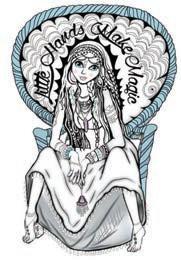
One of the biggest hurdles in diagnosing this condition is there is no simple test that can identify it. There is no blood tests and it is rarely seen on scans. The only way to get a definitive diagnosis is to see a gynaecologist and have an operation called a laparoscopy.
This is keyhole surgery where a tiny camera can be inserted through the tummy button to allow the surgeon to see and possibly sample any abnormal tissue seen.
BY DR SAM PETHENstopping your period
Surgery can help by diagnosing the disease and removing the patches of tissue, sometimes it may be necessary to repair damage caused by the endometriosis, including to the fallopian tubes, and ovaries. This can be done to help improve fertility. Rarely, it may get to the stage where organ removal is necessary, including hysterectomy and sometimes removal of some bowel or bladder.
Remember, most women (70%) with endometriosis will get pregnant without medical help, but some will need some assistance, so please talk to your doctor if you are worried about your fertility.
There is no cure for endometriosis, but it can be managed, and this management will depend on what your symptoms are, how bad they are, and whether you are trying to get pregnant.
Good lifestyle really does help, this includes trying to get gentle exercise most days, maximising your immune system with good sleep, and stress management techniques for example meditation or gentle yoga
Pain management, if Panadol and anti–inflammatories aren’t strong enough, your GP will be able to discuss the use of other painkillers, if appropriate, for part of your management
Hormones, such as the contraceptive pill, can help by slowing the growth of the endometriosis tissue, and by
So, although you may be told that painful periods are normal, and feel you should be able to cope , if your periods are repeatedly impacting your ability to work, or go to school, or the gym, or out with friends, please come and see your GP. Living with any painful condition is exhausting and mentally draining and there is also help available with your GP, or counsellors, or support groups.
For more information go to –betterhealth.vic.gov.au/health/ conditionsandtreatments/ endometriosis
jeanhailes.org.au/health-a-z/ endometriosis
many women, periods are accepted as being uncomfortable, but it is not ok to have periods that don’t respond to over the counter pain killers, and are so painful you are missing repeated days from school, or work, or social engagements.
“Arsenic Hour” is the time when kids are often tired, hungry, and irritable and parents are often stressed and exhausted. Midway through making your Bechamel sauce you hear the slap of skin against skin and the follow up shriek “Mum, Mum Jordan hit me” followed by “Mum she pinched me first”, you shout from the kitchen, “Daniel don’t hit your sister, Kayleigh don’t pinch your brother”, back to the Bechamel until you can hear the muttering get louder and start wondering “why on earth did you not just buy the jar?”
Often we get unwanted behaviour when our kids need something. Maybe they are tired, unwell, or just cannot verbalise what they need from us, it might just be our time they want. In many families around the world Time Out has been used in similar scenarios to the one above to de–escalate and support the kids to self–regulate. This is a great tool and I have had many of my clients use Time Out successfully as a regulation tool which is its purpose, you may be surprised to hear it is not designed as a punishment.
We have probably all experienced the heated discussion which becomes an argument and each party shouts louder and louder and the situation escalates out of control. Time Out would be a great tool to bring everyone back to a regulated state and have a sensible discussion. Unfortunately, during “Arsenic hour” when tensions run high parents often resort to Time Out in punishment mode rather than as a regulation tool. The difference being that they shout the instruction to go to Time Out, they set the timer for 12 minutes, instead of 2 and when the timer is finished, whilst the child is probably now regulated, the parent then demands
they apologise to them, their sister and the dog, then states they won’t get TV time tonight for being so naughty so that nicely regulated child is now becoming escalated again. So, forget the Bechamel sauce here comes Round 2!
Time Out is not just a case of putting a child in a corner or in their room, out of the way. It’s not meant to be punitive it is a tool to help children learn to self–regulate and not escalate to violence. Time out should be the last resort if all your other strategies have failed to hit the spot on this occasion. You also need to have the discussion with them about Time Out, its no good when things suddenly escalate then you shout, “go to Time Out” and they don’t know what Time Out is, so things get louder, and everyone gets a little angrier.
Time Out needs to be explained to the family members, so everyone knows what it means and what is expected, unlike The Super Nanny in the UK, Time Out is not recommended at one minute for each year of age, that is a very long time, recommended time is 2–3 minutes maximum. They just need to be in a spot away from siblings and family members, so they are not being escalated further, we don’t constantly remind them why they are in Time Out or what they did or that they must apologise when they come out. Good tips are to give them an egg or kitchen timer to the set time and show them some breathing exercises at another less stressful time, so they have some tools to use to regulate. Once their 2–3 minutes are up without them escalating further, just ask them to re–join the family or activity they were doing, and do not discuss what happened otherwise re–escalation may occur. The idea being to regulate themselves not to punish them.
Hopefully as they get older they can recognise when they are escalating and use breathing or other techniques
to self–regulate without the need for Time Out. Recognising emotions and having the language for emotions helps immensely with this and the emotional language becomes more complex as they get older.

Would Time In have made a difference? Would leaving the Bechamel sauce to thicken to inedible stodge on the stove and going to the other room, being in the space with them, asking face to face what’s going on for you rather than shouting from the kitchen have made a difference?
Time In happens when you do dedicate some time to be in the space with them, done regularly Time In supports attachment and communication between parent and child. Just 10mins child led play a few times a week (no answering mobiles or running to check on the chicken) can make a huge impact on family life. Set some ground rules, be clear you are playing for 10mins, setting a timer on your phone or get an old fashion kitchen timer, when the timer goes off its time to do other things. Child
“Arsenic Hour” is the term used to describe the period between getting the kids home from school and getting them into bed.
Time Out is not just a case of putting a child in a corner or in their room, out of the way. It’s not meant to be punitive it is a tool to help children learn to self–regulate and not escalate to violence.
led plays means you let your child tell you where the train, doll, Lego block goes or how to colour in the picture. For those of us who find “make believe” play difficult, child led play is often less confronting with the child directing you for the period of play.
Time In can be as simple as just “being with” your child, being interested in what they are interested in, it may mean learning the names of all the Paw Patrol characters or the names of the dinosaurs or in my case the names of the all the characters in The Little Mermaid and later the One Direction band members. Time in can be connecting and communicating or it can be affection and closeness, remember if you are not comfortable with affection your child will pick this up so go with the level of affection you are both comfortable with.
Time In is not helicopter parenting it is saying it’s a great picture they have drawn as you walk by with yet another load of laundry, but let’s up the ante a little. As the adult we are supposed to know what the picture or block building is even if we don’t have clue. So that we don’t make this obvious, we won’t
ask them what it is maybe just mention the part we like, “I love this blue part tell me about that”, jvust pick a part you like and ask about it and then ask them what is their favourite part, this small and seemingly insignificant conversation to us will be huge to them, you like the blue part and you are interested in what they like, just watch them beam with pride. Then of course, the said picture has to hang on the fridge for weeks to show Grandma and Aunty Sally and the babysitter until it fades in the sun, or the paint has dried so much it peels off all over the floor.
Additionally, some children with additional needs do not fare well in Time Out, other options for self–regulation are; sensory bags; a great idea for children with additional needs, a canvas tote bag with things like stress balls, rubber chew toys if they are biters, fidget spinners, playdough, kinetic sand in a sealable bag, or Popits. There are hundreds of options available online
and in local stores, pick things that your child is comfortable with and you are comfortable with them having – you may not want them to have Kinetic sand unsupervised!
You will know what tools and strategies work and what don’t, you may have to swap some of those tools around as they get older, but remember you are the expert in your child, parenting professionals can give you the tools, tips and tricks but we don’t know your child like you do!

Lastly but most importantly and that you as a parent get some Time Out whether that’s just 10mins to have a cuppa and read a magazine in peace or an hour walk along the beach, a yoga class, or a coffee with friends. We cannot fully give Time In if we haven’t had our own Time Out to recharge and restore.
Laura Hurstfield has 20yrs experience as a Social Worker and Parenting Practitioner. Providing Parenting Programs such as Triple P Positive Parenting Program,123 Magic & Emotion Coaching and Circle of Security. In 2013 Laura won the accolade of International Triple P Practitioner. Laura offers 1:1 and group programs. Find out more: www.hurstfieldconsulting.com.au
Dear Mums, Happy Mother’s Day. I just want to say from one imperfect mum to another – I know you’re doing your best. And beyond the picture perfect Mother’s Day images, know that sometimes our best parenting lessons comes from experiencing our failures.

I remember when my new to high school teenager had his first big school project due. The lead up involved many acts of nagging, reminding, threatening to get him started and still, it took till the last weekend to see a flurry of stress and activity arise from him. And even then, he kept stopping and asking for me to help, A.K.A, for me to do it for him.
His first effort was unceremoniously critiqued by me. It was harsh criticism that came out of my mouth, uncensored, before I had time to put it through the ‘positive parenting filter’ with a resounding, “Not good enough, not even close, this is a primary school effort, you are in high school now, it needs much more substance”. Ooops. Not my finest hour as a parent.
I have to say, I was so worn down and drained by the geeing up and motivating and redirecting him back to focus that I was seriously tempted to just take over and do it for him. Truly, wild horses had to hold me back, and I do confess
to pushing him off the computer at one point and taking over by putting content headings and sections in to help him organise the information according to the marking scheme. Yes, yet another hilarious/tragic parenting moment for me.
I eventually checked myself and deemed my actions a bit crazed and stopped. Even so, it ultimately became a heavily supervised process, hand holding him the entire way through to see a satisfactory outcome.
Seriously, it was so frustrating to watch him want to give up so quickly. It was mildly worrisome too at how I also wanted to give up as I mock prayed to God to save me from this parenting tedium! And there you have it. Like mother like son.
BY SARAH TOLMIEunderstand my son. I knew he could do it; he knew the subject; why didn’t he just take my guidance and do it? It seemed a rude lesson that my son was not me! How many times do I need to be reminded of this? How many times have I lamented how much easier it would be if he just did what I said and agreed with me.
I really wanted him to succeed. I didn’t want him to experience the obvious embarrassment he would feel for such a thin effort once his teacher marked it or he saw what his fellow students handed in, but to rush in and rescue him, really wasn’t going to help him at all. Was I worried about how it reflected on me? Maybe this was a bigger deal for me than for him?
It’s a tough balance we walk as parents. We need to allow our children to forge their own pathways and to make their own mistakes, and yet we must guide them and help them too. We need to work out when to step in and be the adult. Sometimes we get it wrong, we step in too early because we want to protect them and present them to the world in their best light, but is that more for us than them?
The pattern revealed itself to me in all its ancestral glory, and a big Mumma guilt moment, one of many, was reaching a crescendo. “OMG, has he learnt when the going gets tough to give up from me?!”
It made me reflect on my school career. I loved school. Learning came easy and I was such a swat and a good student. I would always overachieve, at least academically. I couldn’t
As a person, and as a mother, some of my best lessons and truest self–realisations have come from my biggest failures and humiliations – this one included. I don’t regret them. I reflect and learn from them.
Maybe this is the best modelling we can do for our kids – showing self reflection; seeking personal insights; learning self–acceptance and continually evolving towards our best. We may never reach that destination of perfected best, rather it is about accepting each moment, the good and not so good.
Much love, Sarah
Sarah Tolmie – Life & Love: Sarah is a marriage therapist, life & love and relationship coach, end–of–life consultant, an independent and bespoke funeral director and holistic celebrant. She provides holistic care, mentoring, guidance, healing and transformation for individuals, couples and families at their most important times of life & love – at end–of–life, in love & relationship, and in ritual and celebration. Sarah has a series of online courses – “Creating a Miracle Marriage. Online Course for Couples” and “How do you feel? Using the intelligence of our emotions to heal and be whole in Life & Love and “Landscapes of Life & Love and Loss. Traversing the pathways of dying, death and grief”. To find out more, visit www.sarahtolmie.com.au.
We need to allow our children to forge their own paths and ways, and to make their own mistakes, and yet we must guide them and help them too.
With people spending more time indoors these days, its essential that the indoor environment of our homes is of a good quality. We all know that as individuals, we need to adjust our habits depending on the season, however what is often overlooked is that our homes also need different maintenance depending on the weather and climate.
With the cooler weather just around the corner, now is a good time to spend a little time on our homes to ensure it remains a healthy place to spend time in.
Ensure your roof and building envelope is weatherproof
The onset of cooler weather often signals more rainy days, and a common mould related problem often seen by Building Biologists is either water ingress into the roof void through cracked or broken roof tiles, or where water has been pushed up into the eaves and ceiling due to gutters that are blocked with leaves and debris.
The importance of a weather tight roof is often overlooked however engaging a licensed roofing professional on an annual basis to assess the roof, flashings, gutters, and downpipes to ensure they are structurally sound and properly drained into storm water drainage may just save you big bucks on water related remediation down the track.
The Central Coast can have high humidity all year round, which combined with a lack of ventilation, creates the perfect conditions for mould. In order to keep mould at bay in your home during

the cooler months, you will need to ensure indoor moisture levels are kept as low as possible and that there is plenty of indoor air flow and ventilation.
If it’s a nice sunny day, open all the windows to get some cross ventilation through the house, but its if raining, close the house up and try to remove as much indoor moisture as possible with dehumidifiers or using the ‘dry’ function on your reverse cycle air conditioning system. Be mindful of not creating additional moisture inside the property by ensuring that extractor fans are operational whilst showering and cooking, and if you must dry clothes indoors, ensure that you are also operating a dehumidifier in the room to capture the moisture being released.
Ceiling fans are also a great way of maintaining air flow indoors – have them running 24/7 where possible and make sure they are set to either ‘Summer’ or ‘Winter’ depending on the season.
A cluttered home will increase your risk of mould due to a build–up of dust and lack of airflow. This will be exacerbated during the cooler months as temperatures fall and condensation becomes more of an issue.
Now is a good time to ensure that your home is clear of clutter and that air can circulate underneath your beds and around and behind furniture.
To reduce the risk of mould in your wardrobe, consider de–cluttering and possibly creating a ‘seasonal wardrobe’ where summer clothes are stored in vacuum sealed bags to create extra room
Find out if your home may be contributing to your symptoms.
As a qualified Building Biologist I can assess your home for mould and allergens and ensure that it is a healthy environment for your family.
CALL 0400 916 057
allaspects@groupmail.com
allaspectsbuildingbiology.com.au
 BY JODI DONOVAN
BY JODI DONOVAN
for the clothes in your wardrobe to breathe. Leaving wardrobe doors open as much as possible will assist with keeping mould at bay and hot washing any items that have been stored over Summer such as doona’s, blankets and pillows will remove any mould spores or dust mites that may have settled into your items during storage.
“Dust should be kept to a minimum as dust becomes a food source for mould. Vacuuming with a vacuum cleaner fitted with a HEPA filter and regularly wiping down surfaces with a damp microfibre cloth will help reduce dust levels”.
Heating units can significantly affect indoor air quality if not maintained
If you use either a split system or a ducted system for heating during winter, it is important that these are serviced annually by an air conditioning technician familiar with the Institute of Inspection, Cleaning, Restoration Certification (IICRC) Standards. It is common for these types of systems to be contaminated with mould and also often a lot of dust, if not used frequently which will significantly impact indoor air quality if not serviced regularly. It is worth noting that whilst an air conditioning technician will service the unit and clean any filters, ductwork can not be cleaned and must be replaced if contaminated with mould (a Building Biologist will be able to assess whether contamination is present in your ductwork).
Likewise, any wall mounted gas units should also be serviced prior to use to ensure they are free of dust and debris and not leaking noxious gases indoors. Un–flued gas heaters emit noxious gases such as carbon monoxide, nitrogen dioxide and formaldehyde so any gas heater in the home should be flued and serviced regularly.
Jodi Donovan is a qualified Building Biologist and Committee member of the Australasian Society of Building Biologists and Indoor Air Quality Association of Australia. Building biology is a science that investigates the health hazards in the built environment which includes chemicals in building materials and household products, lead dust, noxious gases, house dust mites, allergens, mould, electromagnetic fields, drinking water contaminants and geopathic stress. For further information or to make an appointment please contact Jodi Donovan on 0400 916 057.
 BY CLARE MARCANGELO, CHILDREN’S NUTRITIONIST
BY CLARE MARCANGELO, CHILDREN’S NUTRITIONIST
School has returned, or for some children it has started for their very first term. This comes with so much excitement and nervousness, will my child enjoy themselves, will they make friends easily, will I be OK without them home with me?!
But for many of us, this term may have presented additional worries. There is no reliable data on how many Australian primary and high school children currently experience anxiety, difficulty with focus and concentration, or behavioural issues. But I can tell you as someone who has “watched this space” from a professional and personal/ parent level for over 20 years, there has been quite an increase particularly in the last decade.
Have you ever witnessed a child’s behaviour change rapidly, seemingly like a switch has been turned on? We’ve all known (or raised!) children who have a tendency to have a tantrum over small things, get angry easily or even throw things and hurt others. Or the children who distract others, or don’t manage to focus or finish their work day after day? In the past we either labelled them as naughty or a day dreamer and looked to tighten up the rules for them so they could get back on track.
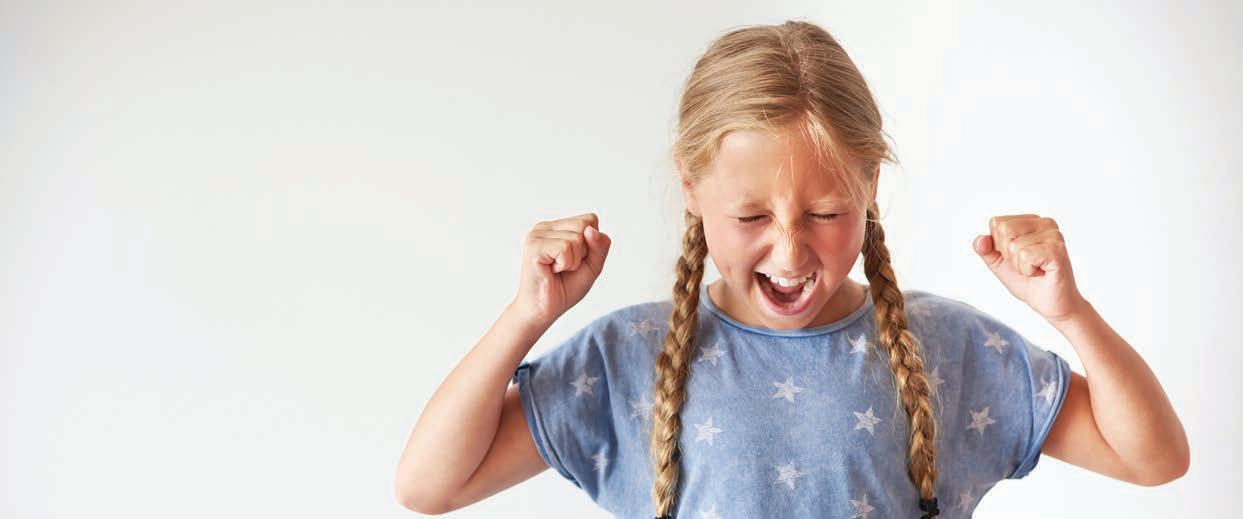
The other end of the spectrum is the parent who tears their hair out trying to help their child who lets big emotions explode each day after school, an unmanageable scenario to which parents are often met with “Oh, he/she is an angel at school and so is clearly doing very well”
This is often a case of masking–concealing the stress all day only to (understandably) let it all out once they get within a few metres of their safe space – Mum, or Dad or Carer.


But what if this wasn’t just “personality” or a lack of discipline, (sigh) as some people would like to put it all down to? The time for tough love has gone. Watch or raise these children and you will quickly understand that being able to achieve these things can often be beyond them.
The simplest place to start, and the one that is often over looked, is food’s relation to blood sugar regulation. It must be noted that this is rarely the only contributing nutritional factor, so please do read on.
If a child starts the day with just a carbohydrate based cereal, and perhaps very little protein/good fats competent to slow down metabolism, this may release energy very quickly, causing an initial spike in blood sugar. They then experience a small drop, which is rectified around 9am by fruit break, which although a healthy choice, is more sugar, spiking levels again.
They drop again only to often be picked up by a bag of crisps or a rice cake at recess, and a vegemite or jam sandwich at lunch. You can see how this pattern may provide many opportunities for a child to feel low in energy and what we as adults often classify as “hangry”. This can cause erratic, irrational behaviours, lack of focus or even emotional meltdowns. The good new is, this one is easy to correct. We merely need to perhaps change foods to slow releasing wholegrains, and add good fats and proteins to each meal and snack, to keep blood sugar levels nice and even all day.
Artificial additives in pre–packaged foods can of course cause behavioural and emotional outbursts in many children, and should be avoided. This means watching for a connection between behaviour and consumption of foods with flavours, colours, preservatives, and/or flavour enhancers. This can be done by monitoring ingredient lists and consulting free apps like “the chemical maze” to check for these. If you do find your child reacting to these chemicals, eating foods free of them or when possible, making it yourself should rectify this issue easily.
Even the slightest issue with gut health, which can come from birth and just become slightly worse over time, can cause a child extreme brain fog, anxiety and even obsessive behaviours. These gut issues can sometimes be hidden too, they don’t always manifest in obvious digestive complaints like bloating, constipation or farting etc.
Unfortunately, in many children that I see, these gut issues and sometimes other genetic factors can result in slight nutrient imbalances or deficiencies. This has a knock on effect of making it difficult to produce enough good feeling brain hormones, and so anxiety and emotional regulation, going straight into fight or flight, can be common.
As I said before, being in heightened easily does mean that a child may have very little ability to stop, listen and correct behaviours, or may be so anxious from a tiny trigger that they
can no longer self soothe and continue with their work.
I love nutritional medicine for this reason as it gives parents tools they can use at home to unlock these barriers and help their child thrive. It isn’t always a standalone therapy, but a great foundation so that a child is all of a sudden actually able to stay calm enough to implement strategies that their carer or other therapist such as OT or psychologist may have taught them.
And remember, early intervention is a huge key, so thankfully whatever you do now can massively improve your child’s happiness and wellbeing for the future.
Clare Marcangelo is a local registered Nutritionist and former Early Childhood practitioner who specialises in children’s health. As a mum herself, she knows how hard it can be to make even the smallest of changes to a family diet.
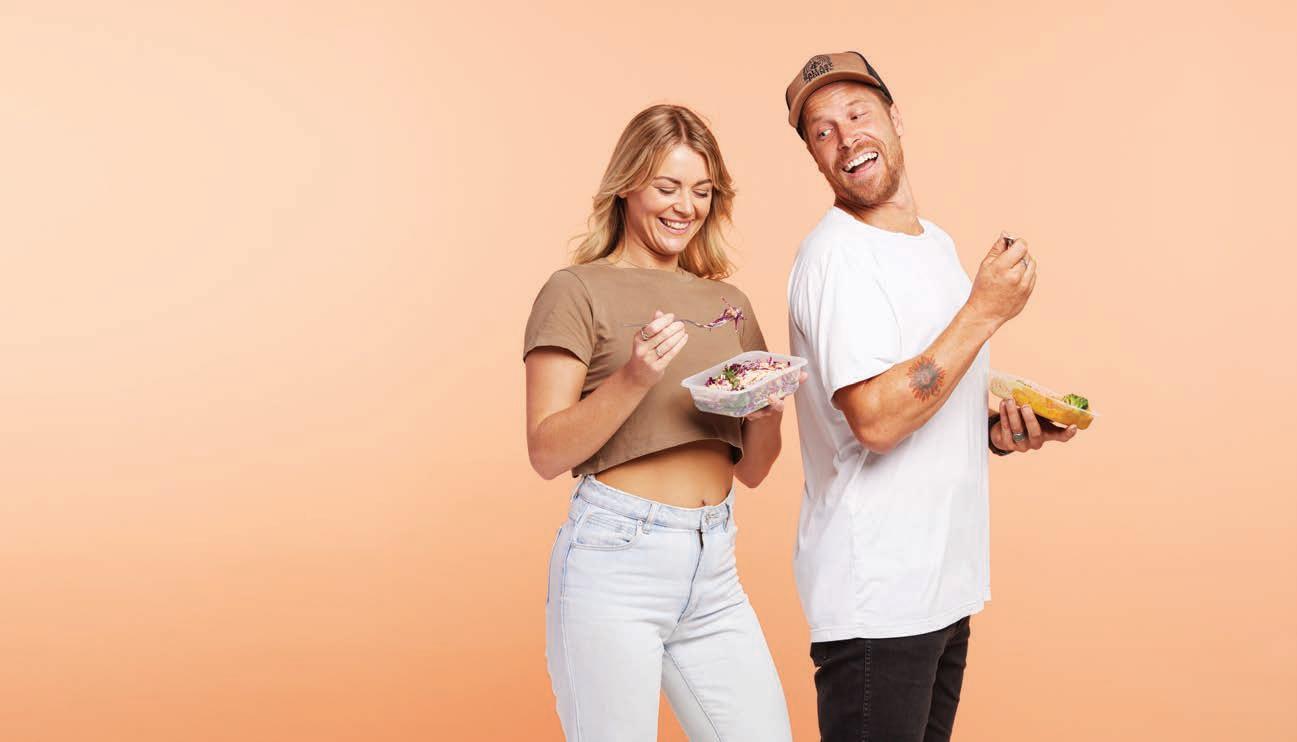

SPECIALISING IN CHILDHOOD BEHAVIOURAL ISSUES, LEARNING AND ANXIETY.
To book, call 0404 795 677 or for more information visit childrensnutritionist.com.au Covered by most private health funds
Working with families for over 20 years
Artificial additives in pre–packaged foods can of course cause behavioural and emotional outbursts in many children, and should be avoided.
Co–Parenting can be a daunting journey, fraught with challenges and emotions, but it can also be a chance to establish a nurturing family structure.
Georgia Spencer, Law Graduate at Orbell Family Lawyers (located in Erina), offers a contemporary perspective on co–parenting in today’s world.
Going through a separation is never easy, and co–parenting can add an extra layer of complexity. But it is possible to navigate co–parenting with positivity, teamwork and legal guidance. In this article, we discuss the challenges and benefits of co–parenting, highlight the legal aspects of co–parenting and answer some frequently asked questions.
Co–parenting involves working collaboratively with your former partner to raise your children. While it can be challenging and overwhelming, co–parenting has many benefits such as allowing your children to maintain a close relationship with both parents, providing stability and routine, and creating a supportive family dynamic. By putting your personal feelings aside and focusing on your children’s needs, you can create a positive, new chapter in your family’s lives.
It would be remiss to overlook the fact that co–parenting presents its own set of challenges. When emotions are high, maintaining effective communication can be difficult. But it’s essential to find a communication method that works for both parents.
Decision making can also be challenging, particularly when you
and your former partner have conflicting opinions. This can make listening to each other and being open to compromise crucial in moving forward.
Who children live with and spend time with
Parents can work together to create an agreement that covers parenting issues, including living arrangements, decision making and time spent with each parent. We, at Orbell Family Lawyers, help separating families negotiate and formalise parenting arrangements to enable you to move forward and can assist with preparing a Parenting Plan or Consent Order.
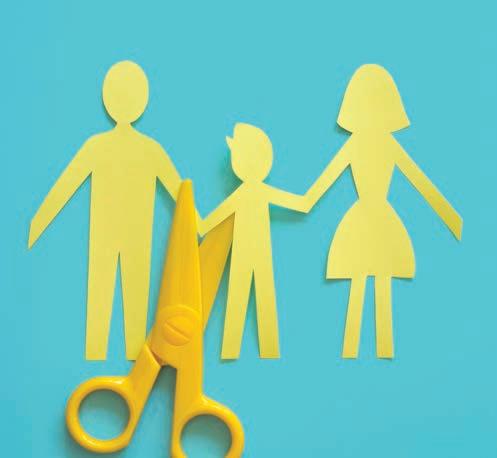
If you are struggling with co–parenting, it is important to seek professional support from an experienced family lawyer.
There are many other services and resources designed to help separating families such as:
Counselling services and information
Printable brochures about family law services
Financial advice; and
Information in other languages. www.familyrelationships.gov.au
Parental responsibility refers to decision making and not time spent with the children. Generally, there is a presumption that parents should make joint decisions about school, health, education, religion etc however in some cases this can be rebutted such as where there are risks to the children or where there has been family violence.
Do both parents have to make joint decisions and agree on everything? No, however it is important both parents try to work together to make decisions that are in the ‘best interests of their children’. If parents are unable to compromise or agree, they may benefit from attending mediation or seeking legal advice to resolve any issue.
What are the steps involved if both parents cannot agree on a parenting arrangement?
Consult an experienced family lawyer who can help you explore your options and develop a plan that will work for you and your children
Attend mediation
If all other avenues have been exhausted, it may be necessary to apply to Court.
Can co–parents change their parenting agreement?
Yes, co–parents can change their agreement if both parties agree or by going to mediation or Court. Any changes to the agreement should be made in writing, preferably done with
It would be remiss to overlook the fact that co–parenting presents its own set of challenges. When emotions are high, maintaining effective communication can be difficult.
the assistance of a qualified family lawyer.
What do the Courts consider in relation to parenting arrangements? The ‘children’s best interests’ is the number one priority, rather than what is best for the parents.
What if there is a history of domestic violence?
While co–parenting is promoted, children’s wellbeing is paramount. If children are at risk, the Court will take appropriate action to safeguard them. You should seek advice from an experienced family lawyer and contact the police if you and or your children are in danger.
Navigating the family law system in Australia can be made easier by understanding the legal responsibilities and rights of co–parents. While co–parenting can be challenging, it can also be a fulfilling experience as it allows parents to establish a nurturing family environment. By prioritising effective

communication, mutual respect and a child–centric approach, co–parents can successfully navigate the complexities of shared parenting and create a happy and healthy future for their children.
We, at Orbell Family Lawyers, specialise in family law.
We help separating families make arrangements for their children without going to Court, ensuring they have certainty and can move on with their lives.
Mention this article when you call to receive a free 15–minute discovery call with one of our experienced family law solicitors.
Phone: (02) 4314 6080
info@orbellfamilylawyers.com.au orbellfamilylawyers.com.au
Now Enrolling for 2024

Green Point Christian College has an excellent and long-established reputation for supporting families who value Christian education. Our school provides holistic education from quality staff in a caring and supportive environment.

Green Point Christian College 382 Avoca Drive, Green Point
www.gpcc.nsw.edu.au
The ‘children’s best interests’ is the number one priority, rather than what is best for the parents.
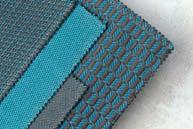 BY ALITA BLANCHARD, PARENT COACH
BY ALITA BLANCHARD, PARENT COACH
I am a mother of 3 boys –and it’s been the greatest growth journey of my life. Unpacking my stereotypes, learning to listen to tears, meltdowns AND anger, holding space for aggression, setting boundaries with respect, being around so much intensity, movement and noise while also being in full adoration of my boys’ sensitivities, emotions, tenderness and fragility.
Their anger and physicality can be highly triggering for mothers. It was for me. My greatest work as a mother has been making sense of my own suppressed feelings and beliefs so that I could learn to be more emotionally available to my sons.
Here a few things I’ve learned raising my boys –

Boys are just as sensitive and emotional as girls – it sometimes just looks different
Society ingrains us to believe that boys and men should be tough, hard, closed down emotionally. Sadly this is still the message many boys receive from parents, family, friends, sports and school. We need to learn to nurture their soft, sensitive, emotional side
while also accepting their big energy, need for physicality, expressive movement and yes, their BIG anger.


Crying is healing
Teach your boys that crying is healing. Remind them they are allowed to feel sad, worried, fearful and lonely at times. And remind them that you will always try to listen to their feelings – the tears, anger and worry. Let them know you are not perfect and that sometimes you won’t be able to listen but you will keep trying. You are learning too.
Anger and aggression can be healthy Tantrums, meltdowns, hitting and fighting, slamming doors, punching things, ripping, silent treatment, disrespect, meanness. Yes it will trigger you especially mothers who fear anger (this is many of us!) But anger and even aggression can be healthy. It’s life force energy. And its a journey to finding healthier safer ways to release anger. Co–regulation is key and you doing your own anger work.
Try not to put them on the spot in front of others. Notice when you are harsh with your boy because he is being loud, active, physical, jumping around. Try

and redirect this energy rather than shut it all down. Yes this is HARD! Boys receive messages very early that they are too much, too loud, too naughty. This builds shame.
They need less talking and more movement
They probably won’t be able to “use their words” often – they need movement and fun and play and then they are more likely to connect and communicate. They may say “I don’t know” and “ I don’t care” because they need a little longer to process what you are asking of them or telling them. Slow down. Surrender. Connect through movement and play.
Discuss how to cope with losing and the feelings around sadness. Discuss that a sense of achievement is sometimes just as powerful as winning. Stop saying “good boy” – instead notice the behaviour and speak what you see. ie. “I saw how you missed the goal but continued playing.”
Teach your boys that crying is healing. Remind them they are allowed to feel sad, worried, fearful and lonely at times.
They will have meltdowns after school and big days away from you Meltdowns after school are common and can be a healthy release – they have been holding their feelings in ALL day. You are their safe person to release it all too. Regulate yourself BEFORE you pick them up. Be prepared for meltdowns in the car – if you have capacity, be ready to listen. If you don’t have that emotional capacity, have food, fun, icy water and calming music.
Don’t take their behaviour personally Some days they will just send you to your absolute edge. Anger, aggression, moods, disrespect, constant fighting, punch ups! Stop making it about you
and your parenting or lack of skills. Your boys behaviour is not a reflection on you. Yes you can guide and love and teach over the long term, set boundaries, learn more tools, seek extra help but stop taking it so personally. If you personalise it, you both end up suffering.
Boys are emotional beings and
deserve to feel safe, seen and soothed when big feelings arrive. Mental wellbeing for men starts by changing the way we view and accept our little boys emotions. As parents, we must learn to advocate for our children and to learn how to listen to their feelings, instead of suppressing them with fear, punishment and aggression. Every human being deserves that.
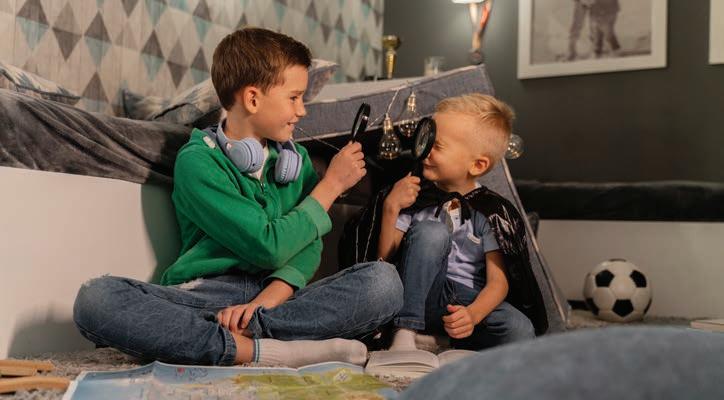
Alita is a mother of 4 young boys (including a stillborn son Remy) on the NSW Central Coast of Australia. She is a Parent Coach trained by Jai Institute of Parenting, Mother’s Circle and Rites of Passage facilitator. She provides mothers circles, workshops, and parenting support programs www.theawaremama.com.au / Socials: @alitablanchard_parentcoach Email alitablanchard@gmail.com


The Helicopter Collective is a fully tax deductible membership based support program for businesses large and small on the Coast. Join other like-minded businesses and be a part of every life saving mission we fly by visiting rescuehelicopter.com.au/you-can-help/business-partnerships/ and go into the May draw for the chance to win your logo on the helicopter for 12 months.
Or support us at one of our regular events... including high teas, golf days, lunches and race days. Follow our local Facebook page to stay up to date with all event information www.facebook.com/rescuehelicopter.centralcoast

They probably won’t be able to “use their words” often – they need movement and fun and play and then they are more likely to connect and communicate.
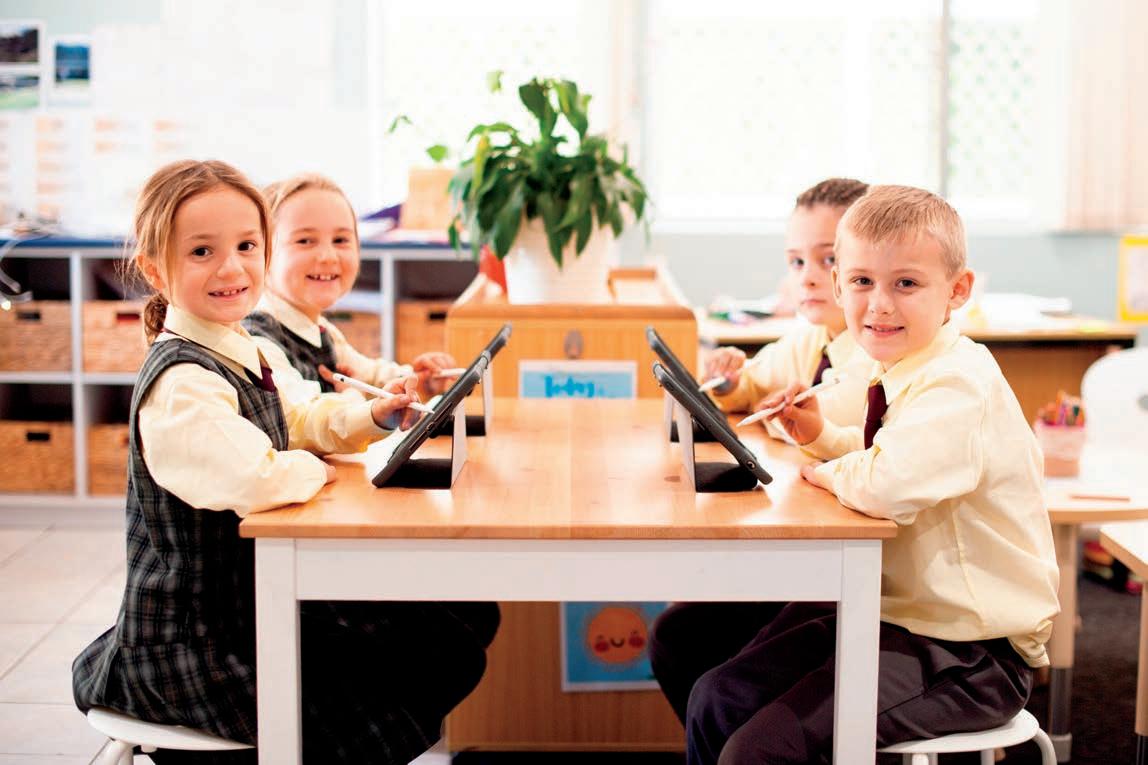
Women can, and should lift heavy weights. It’s a fact, backed up by plenty of research 1. We need to build muscle and we need strong bones if we want to be physically independent as we age.
For a long time there has been a fear, or a hesitation at least, when it comes to building muscle in women. I personally believe this is because of the ideal beauty standards women are measured against in our society –thin and slender is seen as good, wide and bulky is seen as less desirable. At the risk of turning this article into a sociology and feminism essay, I’ll stop here, but it’s definitely food for thought! Ten or more years ago you would typically see women doing more cardio based exercise than resistance training (lifting weights). I’m excited to see that in recent years there has been a big shift in attitudes towards women’s health, and now more and more women are starting to strength train as a way of looking after their body.
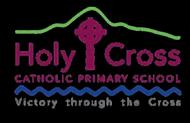
comes to strength training – why is it so important for women? Let’s bust some myths!
MYTH #1 You may remember your Great Aunt Eunice telling you that lifting heavy weights will make you big and bulky, and you don’t want to be too big – take no notice!
FACT In reality, getting “bulky” from lifting weights is extremely hard. I’m not one hundred percent sure what a bulky body is, but I’m going to go ahead and presume it means big, broad, wide with big muscles. To get this sort of body you would have to have a large level of testosterone in your body, have an extremely high protein and calorie diet, train multiple times a day and pretty much make building muscle your full time job! My point is, it’s hard to build muscle “bulk”, so there’s zero possibility that you would accidentally end up looking like The Rock if you were to start lifting heavy weights.
MYTH #2 You’ll injure yourself if you lift heavy weights.
FACT Injuries typically happen when you lift something too heavy for your current strength level, with
BY LOUISE HURLEYpoor technique. When you work with the right professionals they can help you start to increase your strength gradually with progressive overload. Strength training in women has actually been shown to decrease the risk of injuries, including back pain and brittle bones, especially for post–menopausal women 2
MYTH #3 Lifting heavy weights is bad for your joints as you get older.
FACT Not only does lifting heavy weights build muscle, but it also increases bone density, resulting in fewer injuries as you get older, and increases the stiffness and thickness of your connective tissue. This all means that if start strength training now and you’re lucky enough to grow old, you’ll be more physically independent and less likely to experience falls and if you do fall, you’ll have a lower risk of fractures3
MYTH #4 I can’t lift heavy weights after having children.
FACT Almost all women after giving birth need pelvic floor rehabilitation, especially if they experience pelvic organ prolapse. Lifting heavy weights
is something that you should gradually work up to under the guidance of a women’s health physiotherapist and a MumSafe™ trainer, but it’s never off the cards completely. With good pelvic floor rehabilitation, you can absolutely lift heavy weights after having children.
FACT It’s a fact that dense bones and strong muscles weigh more than fat. So yes, if you were to build more muscle, get stronger bones and not lose any body fat then you would weigh more. However, the number on the scales is not a good measurement of your overall health and I believe that an increase in this number is well worth stronger muscles and bones! In the long term you’re more likely to lose body fat when you have bigger muscles because it increases the speed of your metabolism.
So how can you start to add heavy weight lifting into your life?
What is considered heavy will differ from person to person depending on their current strength and fitness.
The best way to determine whether you’re lifting heavy enough (or not too heavy) is to work with the right fitness professional. A heavy weight is roughly seventy percent of the maximum weight you can lift or move with, also known as your one repetition max (1RM). This is very general advice and you should always take into account your individual needs
Always start light, aim for between 5–12 repetitions of a movement and gradually increase as your confidence and strength grows
Ask for help when you need it. It’s so much better to find the right person in the beginning who can help you start lifting heavy weights, rather than struggle through, feeling unsure and risking injury
If you love other forms of exercise then never stop what you love doing, just try to add in some weight training when you can. Movement is a bit like your nutrition – you need variety to thrive!

Louise Hurley As a MumSafe™ trainer and Pregnancy and Postnatal Corrective Exercise Specialist, Louise’s mission is to help mums at every stage of motherhood safely start or return to exercise. Louise is the owner of Strong Mums and runs small group training and 1:1 PT. Find out more at www.strongmums.com or on social media @strongmumsgosford
Holviala, et al. (2006) Effects Of Strength Training On Muscle Strength Characteristics,Functional Capabilities, And Balance In Middle–Aged And Older Women. Journal of Strength and Conditioning Research, 20(2) 336–344. Kemmler, et al. (2004) Benefits of 2 Years of Intense Exercise on Bone Density, Physical Fitness, and Blood Lipids in Early Postmenopausal Osteopenic Women: Results of the Erlangen Fitness Osteoporosis Prevention Study (EFOPS). Arch Intern Med. 164(10):1084–1091 Rhodes, et al. (2000). Effects of one year of resistance training on the relation between muscular strength and bone density in elderly women. British journal of sports medicine, 34(1), 18–22
Leading Central Coast private practice, Cancer Rehabilitation & Lymphatic Solutions, developer of the unique OncoLaser system using MLS Laser, offer patients a premium and comprehensive allied health rehabilitation centre, providing high quality services to aid in quicker and more effective physical rehabilitation recovery from surgeries, cancer treatment, sports injuries and other conditions.


02 4312 7033 / 5/30 Karalta Rd Erina NSW 2250
www.coastalrehabhub.com.au coastalrehabhub


in recent years there has been a big shift in attitudes towards women’s health, and now more and more women are starting to strength train as a way of looking after their body.KATE PERKINS Founder & leading Cancer Rehab Occupational Therapist (OT) & Lymphoedema Therapist
We are living in a technology revolution and with so much information available in real time, we just need to be able to find time to read it. Time is our most valuable resource; we can’t get it back once we have lost it.
Whether you are a child learning at school, an adult working on screens all day or someone who likes to catch up on news or social media, being able to read and process information quickly enables us to respond faster and more appropriately to our environment. This gives us more time to do what we want to do in a day, rather than what we need to do in a day.
excitement, danger, anger, and aggression
Green light promotes creativity, safety and has a calming effect
Yellow light could improve the level of attention, reading speed and response time.
But could these effects be transferred in a tinted lens? This possibility was first described in the early 1980’s to treat a condition called “Irlen Syndrome”
What is Irlen Syndrome?
Irlen Syndrome is described as a disorder in the way the brain interprets light signals. It was identified in the early 1980s by Olive Meares and Helen Irlen as a perceptual processing disorder. They reported at that time that this was not an optical problem, only that the brain’s ability to process visual information is impaired.
The treatment that is offered to alleviate these reading difficulties is the use of coloured lenses.
Fact or fiction?
There have been two independent reviews of the evidence behind the benefits of coloured lenses on reading ability.
BY DR NICHOLAS ALTUNEGthe theories were highly speculative.
It was concluded by both studies that the use of coloured lenses should not be endorsed and not recommended for treating reading deficits.
Here in Australia, the position statement of the Australasian College of Behavioural Optometrists is that there is no reliable scientific evidence to support the routine use of Irlen lenses to treat reading problems and dyslexia.

Could we benefit from using coloured lenses to improve our reading ability?
Coloured lenses were first used in the US Civil War to treat depression. This is where the phrase “seeing the world through rose–coloured lenses” originated.
Coloured light has been shown to trigger chemical responses in the body.
Blue light is essential in the regulation of our circadian rhythm
Red light is associated with
In a review in 2016, 244 studies were assessed, but only 51 of these studies could be used due to significant flaws in study design. Of that 51, half showed no improvement in reading ability with the use of coloured lenses. The improvements described in the remaining studies were deemed to be unreliable because they relied on subjective responses which could easily be biased. The positive responses were likely the result of placebo, practice, or the Hawthorne effect.
In another review in 2019, the authors were very critical of the scientific methods used in most studies and expressed concerns about the validity of Irlen Syndrome as a condition. They reported that much of the data supporting it was outdated and
Symptoms of Irlen Syndrome
Blurry vision, headaches, eye strain/ fatigue, visual disturbances, light sensitivity, difficulty attending and difficulty with depth perception are reported as common symptoms of Irlen Syndrome.
Could these symptoms be caused by something else?
These same symptoms are very commonly seen in Binocular Vision Anomalies such as Convergence Insufficiency, Accommodative Dysfunction and Oculomotor dysfunction.
What does the research say?
Two independent studies reported that 95% and 83% of subjects identified as good candidates for Irlen filters had identifiable visual issues.
This suggests that many people seeking treatment from Irlen filters may not need them if their visual issue is resolved by Optometric treatment.
Coloured lenses were first used in the US Civil War to treat depression. This is where the phrase “seeing the world through rose–coloured lenses” originated.
A separate independent study found that 57% of Irlen candidates reported having had an eye examination in the last 12 months, but 90% of these subjects had significant visual efficiency problems which were undiagnosed.
This suggests that many routine eye examinations are not detecting binocular vision or oculomotor anomalies.
In 30 years of clinical practice, I have found that a small number of patients respond positively in their reading performance to colour. Still, the majority of these no longer observe the benefit of the colour once their binocular vision anomaly is corrected.
The remaining patients who respond positively to colour are usually sensitive to pattern glare. These patients have increased sensitivity to bright and flickering lights, as well as certain striped patterns. This could be associated with certain types of migraine, epilepsy or occur after a concussion.
In these cases, combining the best binocular vision correction with the clinically determined appropriate colour will provide symptomatic relief and optimal visual function.
I believe that coloured lenses could benefit a very small percentage of cases. However, this should only be considered after a binocular vision anomaly has been ruled out. In patients who are sensitive to pattern glare, an appropriate tint can be added to enhance a binocular vision correction if it provides an additional benefit.

According to the research, 90% of basic eye examinations do not detect these binocular vision anomalies, so where do you go to investigate this properly?
An experienced independent Optometrist is more likely to take the time to assess properly for binocular vision anomalies. If they have training in Behavioural Optometry, then they will be able to diagnose and treat more conditions in this area.

This article is intended to promote understanding of and knowledge about general eye health topics. It should not be used as a substitute for professional advice, diagnosis, or treatment. Always seek the advice of your health care professional prior to incorporating this as part of your health regimen.
Dr Nicholas Altuneg is a Behavioural Optometrist who has been working on the Central Coast for almost 30 years. He is the co–founder at Eyes by Design, which is in the Kincumber Centre. Appointments can be made by phone 4369 8169 or online at www.eyesbydesign.com.au
Iremember sobbing uncontrollably, wildly even, as I sat with all three of my babies in my arms. I felt deep pain that I was failing at this because being a mother had stopped feeling good.
I had been spent years working through mental health issues, but had been feeling good for some time. The arrival of baby number three made me feel as though I was a brand new mum all over again. I had been stuck in a phase of complete nervous system and emotional overwhelm. It felt as though the walls were falling in on me. Uncomfortable and painful feelings around my relationship to being a mother started to creep back and I was losing joy for almost everything in life.
That day on the lounge as I sobbed tears that felt as though they were flowing from the deepest parts of my soul – I wondered if anyone else felt like this? If anyone else had this kind of deep sadness? I was surrounded by the loves of my life, the three very beings that have made my life so full and complete –and yet I felt empty and resentful.
I was trying to compute how I could love them so much and how I could have such a strong feeling to escape it all. And as triggering as that statement sounds, it was truthfully what I felt inside. The extremes of these emotions are what ripped me apart the most. How could I possibly feel like that about my own children? What kind of mother actually feels as though she wants to escape her children?
The guilt ravaged me. And I knew
better than that, like I said, I had been working through mental health issues for 6 years now. I knew the processes, I knew my triggers and I knew what supported me in navigating out of that space. But yet still, I was here, wondering how I was gifted such beautiful children yet could not manage to stay fully present and connected with them and my heart.
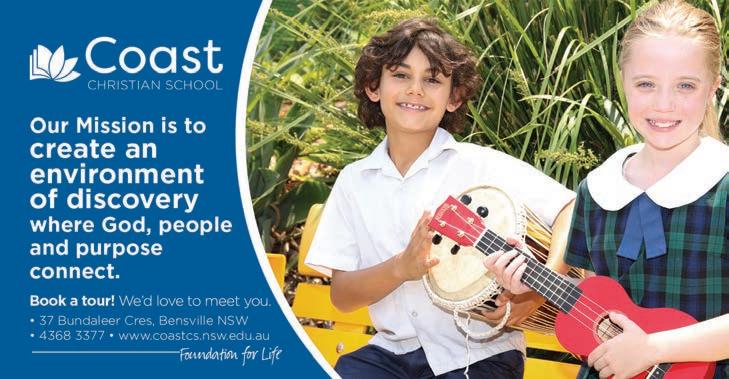
of a mother was not congruent with my own experience which was feeding the internal struggles I was feeling. The story we tell each other through the decades, the images we see surrounding us – they all tell a story we could never live up to. It’s this story that is breaking us down.
This story is placing a huge weight on our shoulders and it’s no wonder some of us are drowning in silence. The isolation of holding these types of feelings about motherhood is crippling. We need to talk to someone, it feels almost as though a desperation for someone to help. Yet, in the same breath we can’t bear to tell anyone these truths. We are worried they will judge us, fearful they won’t understand and terrified they will take our babies.
But what I’ve learned over time is that those very feelings I had are in fact normal for many mothers at some stage. And perhaps more importantly, even if no other human on this planet felt that way, my own experience was valid and important regardless.
Over time as I’ve sat with the darkest parts of myself whilst navigating becoming a mother, I’ve had a powerful realisation – none of this is on my shoulders. We have all let mothers down. All the fears, worries, dark yet very real feelings I had were all valid but they were fed by a story I didn’t create on my own. The stories and society’s depiction
This situation is a crisis. The women raising the next generation of this world are crumbling. They see a story of motherhood that is shaped around perfection, self–sacrifice and unrealistic expectations. If we don’t change this perception we will continue to fail our mothers.
Let’s start having open and truthful conversations about motherhood, no matter how uncomfortable they make us feel. Let’s open up discussions about the real story of women’s mental health issues and how this is impacting us and our families. Let’s normalise asking for help, whether that be from family, friends or a trained professional.
I hope that by the time my grandchildren are here, we aren’t still watching women struggle under the pressures of being the perfect mother. I hope by then, we honour this process for women. I hope we stop telling them what they should be doing and how they should feel and we start listening to their truth… the gloriously imperfect and beautifully mad truth of being a mama.
Cathy Spooner is a Motherhood Coach and Author who supports women to reconnect with their true self after becoming a mother. She offers 1:1 support, group programs and her book Conscious Motherhood is available online where all good books are sold. Find out more: www.cathyspooner.com.au Instagram @cathyspooner_author
The women raising the next generation of this world are crumbling. They see a story of motherhood that is shaped around perfection, self–sacrifice and unrealistic expectations.
“
EQUIPMENT
• 2 pip e cleaners
• Pastel coloured beads

• Scissors
• Twine/string
METHOD
1. Start by having kids string on some c oloured beads to a straight pipe cleaner.
2. Onc e they are finished, twist the top and round it out like an egg.
3. Measure and cut smaller pipe cleaners and have them put beads on.

4. Twist both sides to the original egg shape. This part can kind of be tricky so make sure it still lo oks like an oval!
5. Tie a pie ce of twine to the top top hang. They are so beautiful hanging in windows!
Credit : www.craftymorning.com
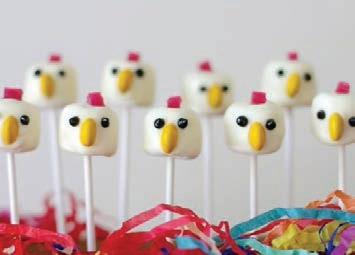
INGREDIENTS
• 150g white cho colate melts
• 100g white marshmallows
• 10 yellow M&Ms
• 2 red licorice twists
• 1 black icing p en
METHOD
EQUIPMENT
• Paper plate
• Easter theme d/coloured paper
• Glue
• Glue Dots
• Ribb on (we used a 7/8 ” wide craft ribbon)
• Egg Co okie Cutter or oval cookie cutter
• Scissors
Note on cookie cutter: the cookie cutter used for this project was for 4” high and 3”across the middle – we traced the inside of the cookie cutter.
1. Cut the inner portion from the paper plate, so that your have the outer portion intact.
2. If your paper has a design on it, turn it over and trace the cookie cutter onto the paper for a template.
3. Cut the eggs from the paper and glue onto the back of the paper plate wreath.
4. Cut a piece of ribbon, make a bow, use a glue dot, and attach to the top of the wreath.
5. Cut another piece of ribbon, form a loop, use a glue dot, and attach to the back of the wreath. Hang and enjoy for Easter.
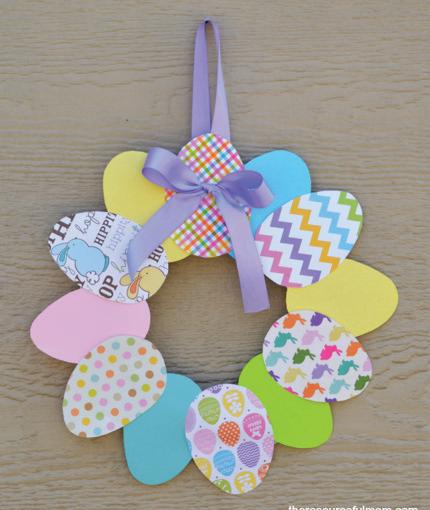
Credit : www.theresourcefulmama.com
1. Melt white cho colate in a bowl plac ed over a saucepan of simmering water. Alternatively, melt in short bursts in the microwave.
2. Push marshmallows onto the icy p ole sticks. One by one, dip into the melte d chocolate, allowing excess to drip off.
3. Cut M&M’s in half with a sharp knife. Cut 4mm slices of licorice and then cut those across into half moons. Working quickly before the cho colate has completely set, press a half M&M into the front of the marshmallow and a lic orice piece onto the top. Refrigerate to set completely.
4. Onc e set, using an icing pen, squeeze a small amount onto each marshmallow to form the eyes. Enjoy!
EQUIPMENT
• 20 p opsicle sticks
Credit : www.bestrecipes.com.au
I think we can all agree that motherhood changes you! But you may not be aware of just how many physical changes are happening within a new mother’s brain to support them in their new role.
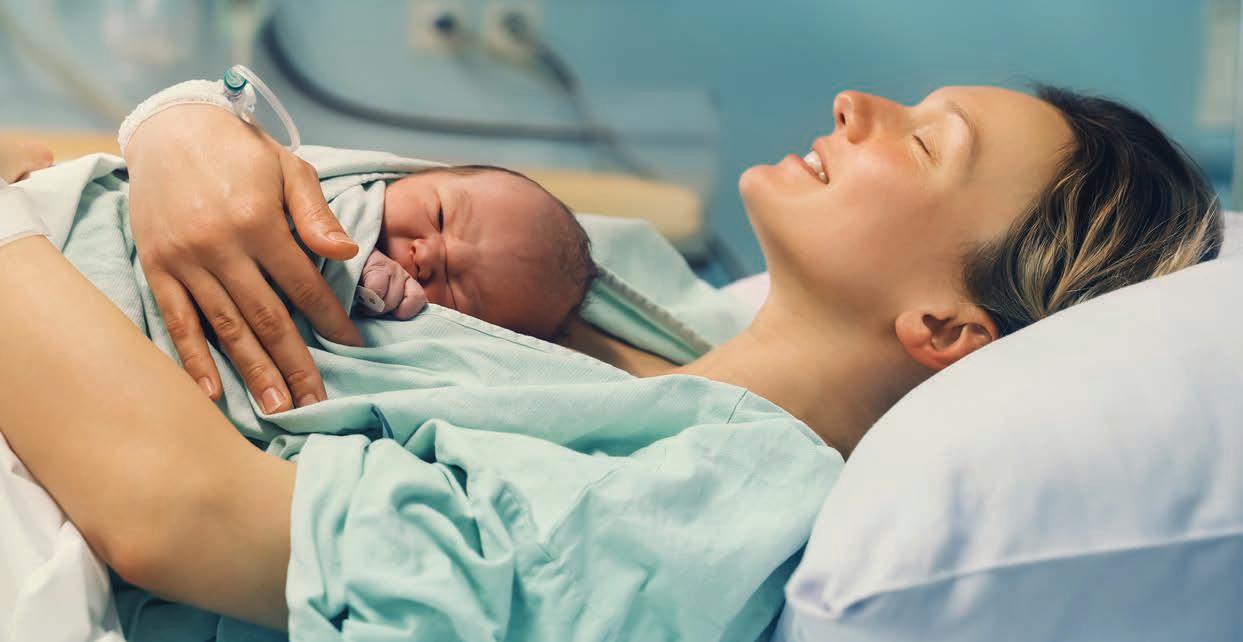
Research studies show us that a mother’s brain undergoes significant changes after giving birth. Some of these changes include an increase in connectivity that starts during pregnancy. The neural pathways in the brain, also known as the communication network, strengthen.

In particular, specific areas of the brain related to emotions, empathy, and caregiving.
There is evidence that suggests the empathy centre of the brain, known as the insula, undergoes changes and growth during pregnancy in preparation for when baby arrives. The insula is responsible for a range of functions, including emotional processing, perception, and interpersonal experience. It is believed that these changes relate to the increased sensitivity that many women experience during pregnancy, particularly when it comes to emotional cues from others.
A study that was published in 2016 found that first time mothers had a significant decrease in gray matter volume in certain areas of the brain, such as the prefrontal and parietal cortices, compared to women who had never given birth. These areas of the brain are two parts of a broader brain network that is involved in the control of cognitive functions such as working–memory, spatial attention, and decision making. However, the study also found that these changes were not permanent and that the brain could recover its original structure within two years after childbirth.
Increased gray matter volume
in the midbrain is associated with maternal positive perception of her baby. This may help mothers become more focused on their baby’s needs, contributing to a higher sensitivity and responsiveness to their baby’s cues.
This shows us just how hard wired mothers are to recognise and respond to their baby’s cues and signals, becoming more attuned to their children’s needs and are better able to recognize and respond to their cries, facial expressions, and other cues. Additionally, the study did not find any negative effects on cognitive or emotional functioning. Further research is needed to explore the long–term effects of motherhood on brain structure and function.
When a woman experiences birth, the levels of multiple hormones shift and change dramatically. These hormonal changes that happen support caregiving for mothers in particular the hormone called Oxytocin.
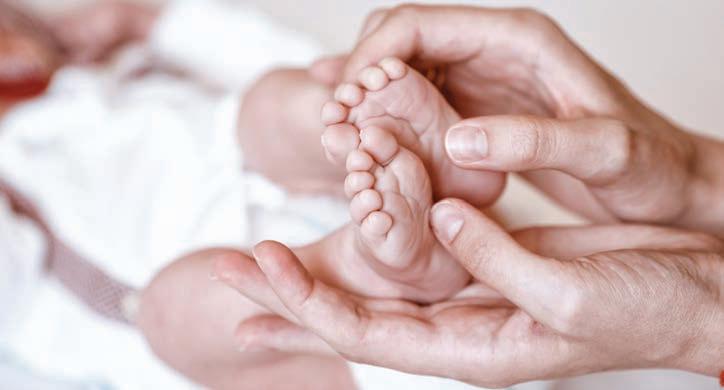
Oxytocin is a hormone released by the pituitary gland that plays a crucial role in childbirth and breastfeeding. During pregnancy, oxytocin levels rise gradually in preparation for birth and motherhood. Oxytocin also helps to reduce pain and anxiety during labour, supports breastfeeding functions and promotes maternal behaviour and relaxation, encouraging mothers to care for and bond with their newborns. The multiple hormone changes that happen during the process of becoming a mother are specific to preparing mothers for the physical and emotional demands of caring for their babies, supporting the development of a strong attachment between mother and child.
It’s amazing to see the changes that happen physically not only in the body, but the brain. There is still a lot we don’t know about how we change as we enter motherhood, information is still building and more research is needed to fully understand the relationship between pregnancy, birth and changes in the brain. What we do know is that the changes we see reflect a mother’s ability to adapt to the unique demands of caring for a new infant and is believed to enhance her ability
to provide the nurturing care that is so important to a child’s development.
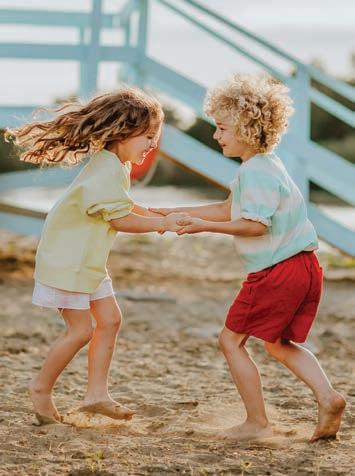
Plenty of changes happen within Dad’s brain too – but we can cover that another day!


Harriet is a mother to three little boys, a Registered Midwife with a Graduate Certificate in Child and Family Health and on her pathway to sitting the IBCLC exam in 2023. Harriet has been in the world of midwifery for the past 12 years and loves to offer her knowledge and wisdom on all things pregnancy, birth, breastfeeding and early parenting. She loves providing in home consultations to the families across the Central Coast, and in clinic appointments at Motherhood Matters in Sydney.
https://www.thebreasthelp.com.au
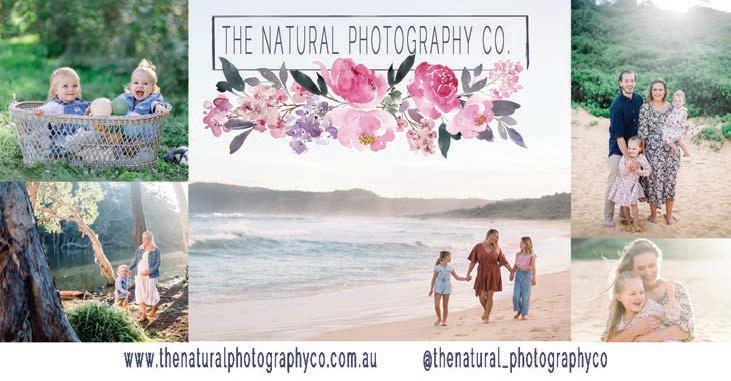
Increased gray matter volume in the midbrain is associated with maternal positive perception of her baby. This may help mothers become more focused on their baby’s needs, contributing to a higher sensitivity and responsiveness to their baby’s cues.



Dani Vee, the author who brought us the heart–warming book, My EXTRAordinary Mum, has done it again with another fun–filled picture book. This time we follow the adventures of an enthusiastic, but unlucky, Dad in My EPIC Dad! Takes us Camping, the first of a six–part series.
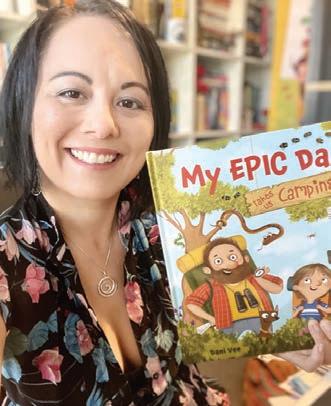
The Dad in Dani’s story is determined to get his kids out into nature. But his well–planned camping trip does not go as smoothly as he’d hoped, and he gets up close to more wildlife than he bargained for. This

poor dad has run–ins with ants, snakes, spiders and even a boar! He is battered and bruised, but the kids appear to be having fun – they are certainly experiencing the outdoors! – and ultimately, the family ends up having an EPIC time.
My EPIC Dad! Takes us Camping is illustrated by Marina Verola. The pictures are bright and dotted with hilarious details, including ants holding picket signs – “No Camping!” and “Save our Nests!”. These finer details give the book a richness and add to the fun.
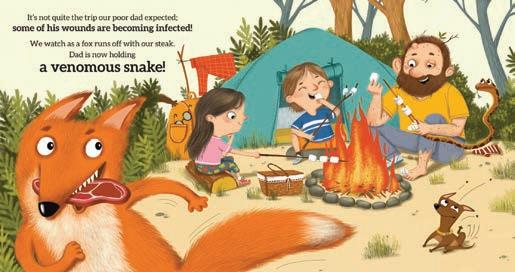

This book will have little ones laughing out loud and pointing at all the funny things happening to (or about to attack) poor Dad! As we know, developing a love for books and reading
is so important. Funny stories, like My EPIC Dad! Takes us Camping, hook kids, entertain them, give them joy and because of that they will most likely be readers for life. And, along with being super funny, you’ll be able to start a conversation about the importance of trying new things and having adventures.




Even though we are celebrating the special women in our lives this month, we couldn’t go past My EPIC Dad! Takes us Camping. It’s well worth a look and will be a fun one to read as a whole family.
Dani Vee is the host of popular literary podcast Words and Nerds. With over 52,000 listeners every month and more than 500 episodes under her belt, the podcast has become a significant part of the Australian literary community. Dani’s debut picture book, My EXTRAordinary Mum is a beautiful book about an adventurous, spontaneous mother who walks to the beat of her own drum and was featured in the Sept/Oct 2022 issue of On the Coast Families.
Jessica Sanford is a writer living on the Central Coast. She has a passion for literature and writes fiction and non–fiction. Jessica was the winner of the Wyong Writers’ 2021 Short Story Competition and has also been longlisted for the Furious Fiction prize. She’s currently working on a novel set in rural NSW. https://jessicasanford.com



